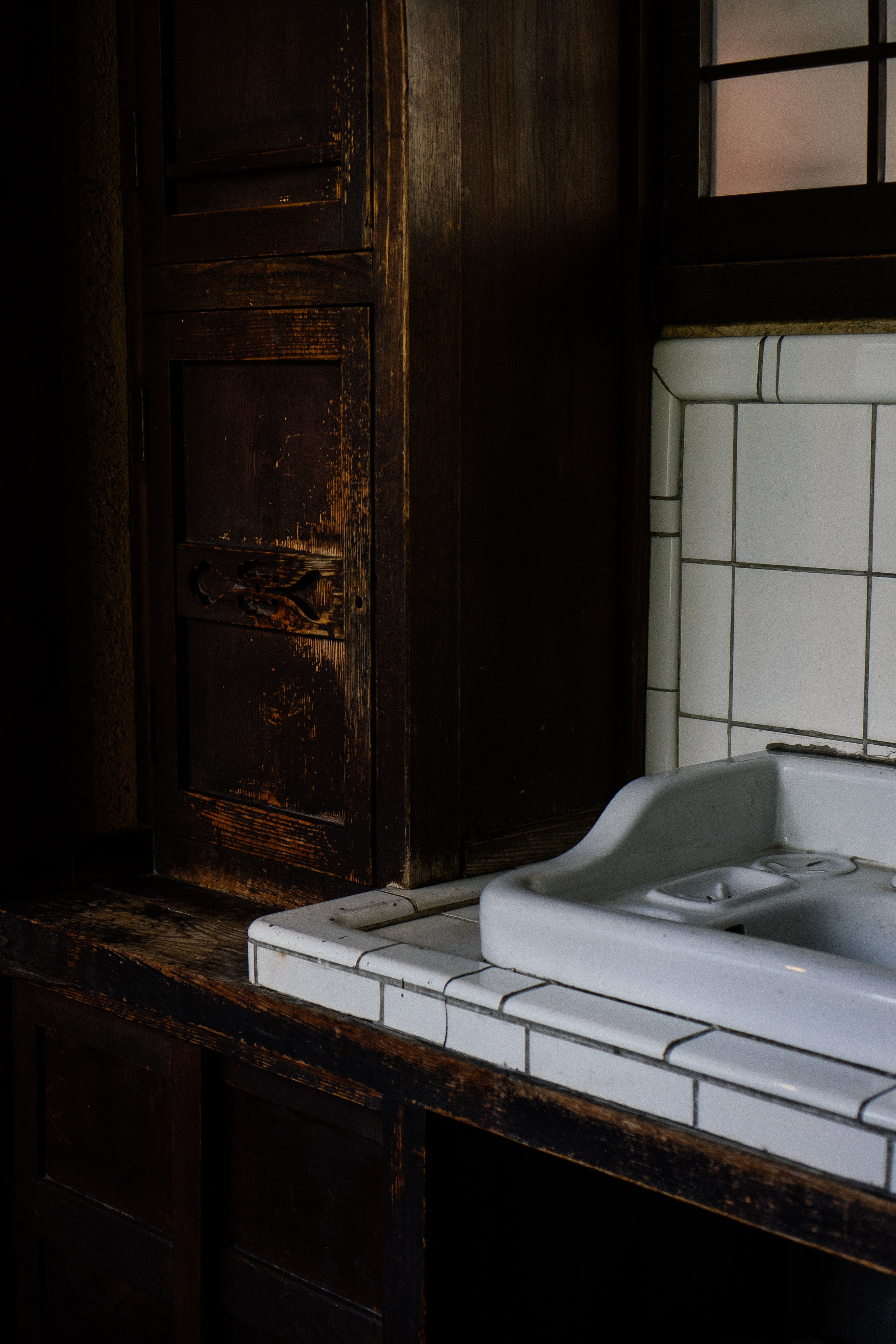The house of potterer Kawai Kanjiro
SIMPLE BEAUTY BEYOND THE CROWDS
Kyoto is filled with exquisite temples, zen gardens and somber forests to fill your days with. Nevertheless you will want to take an afternoon to explore this place where Japanese folkart, pottery and interior design greets you with ease.
Along a narrow street lined with residences in Gojo-zaka you find potterer and artist Kawai Kanjiro’s old living quarters squeezed in. A little detached from the bustle of Ninen-zaka Sannen-zaka and the famous Kyomizudera in Higashiyama, Kyoto’s eastern mountains. This is a place to visit when you have grown tired of the crowds and are looking to surround yourself with beauty and tranquility.
Kawai Kanjiro (河井 寛次郎,1890-1966) was an accomplished potter, famous for his glazing techniques and a key figure within the Japanese folkart movement Mingei. Centered around the philosophy of "hand-crafted art of ordinary people” Mingei explored the beauty in utilitarian and ordinary everyday objects with functionality, inexpensiveness and handcraft at the center. Even if you might not have heard of Mr. Kawai before you will be glad that his relatives decided to keep the wooden townhouse, where he spent most of his life, open to the public. Designed by the artist himself this is a serene place with a mixture of western and Japanese style interior where you can easily spend an hour or two, sitting on one of the porches facing the small garden around which the house is built.
Kawai Kanjiro believed “lifestyle is work, work is lifestyle” and, in line with this, paid great attention to how he shaped the life and atmosphere around him. His house is of course a reflection of exactly this philosophy, with each room enclosing the beauty of the mundane life. The light falls in though the sliding shoji with splendor and you’ll want to pause and sit down by one of the low tables, taking a moment pondering the questions of our existence. There are small alcoves located around the house, seemingly made for exactly that.
Upon entering the building and after removing your shoes you are met by an iori, a traditional Japanese hearth. Around this fireplace, instead of the traditional floor style seating, a couple of small hand-carved wooden chairs are placed, giving a hint as to how the house merges the east and the west. Climbing up the stairs to the second floor gives you a view over the rooftops of the neighboring buildings, and no matter what direction you look in the window frames a perfect picture to put amongst your memories and bring back home.
“Lifestyle is work, work is lifestyle.”
Throughout the rooms pottery and wood carvings by Mr. Kawai are placed for admiration, along with everyday objects that he selected with great care throughout his life. Walking along the corridors and rooms of the house you can tell that he was not only a potterer, but an artist in many senses - calligrapher, sculptor, writer and philosopher - and the house is yet another extension of his artistry and view upon living. What would easily be seen as mundane tools or everyday objects look like pieces of art. A simple wooden chest or a plain vase, nothing spectacular but yet here perfectly balanced with great sophistication.
The artist truly lived as he preached. Reaching the back of the house you find the studio where most of his work was made - along with the very impressive chambered climbing kiln used for burning. This was where the magic happened, where Mr. Kawai’s remarkable glazings sprung to life through out the years. In symbiosis with his everyday life.
Although the house is clearly built based on Japanese traditional design foundations, it has a warming and grounding atmosphere which is different from the more strict styles you usually meet. It truly is a place designed for living a good life, centered around nature and simplicity.
When you at last manage to pull yourself away from the sober but mesmerizing beauty behind door 569, just go around the corner for a hand-drip coffee and perfect fruit sandwich at Ichikawaya Coffee to allow yourself to digest the experience.
GETTING THERE
The easiest way to reach the house is a 9 min walk from Kyomizu-Gojo station (Keihan main line) or Gion stop on bus lines n°12, 46, 100, 201, 202, 203, 206 and 207.
THE HOUSE OF KAWAI KANJIRO, 河井寬次郎記念館
569 Kanei-cho, Gojozaka Higashiyama-ku, Kyoto
+81 (0) 75 561 3585
open every day except Monday from 10:00 to 5:00 p.m..
900 yen for adults
500 yen for secondary school and high school students
300 yen for elementary school children










